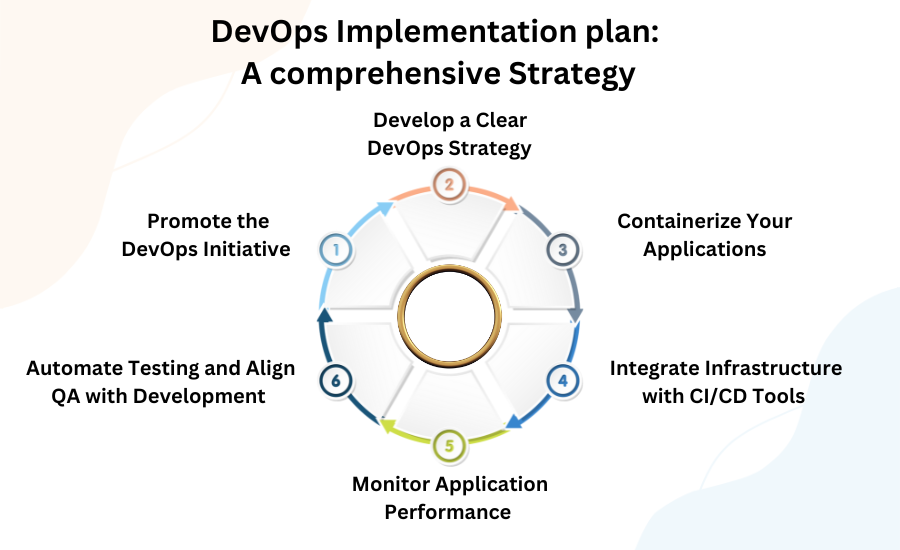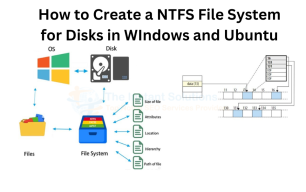DevOps Implementation Plan: A Comprehensive Strategy

As DevOps becomes more widely adopted in large organizations, its definition changes and includes different viewpoints. It can be seen as a culture, a movement, a methodology, or a blend of these elements. Its definition can change depending on who you ask, showing how flexible and adaptable DevOps can be. No matter how it's defined, achieving success with DevOps is a journey that requires time and effort. By embracing DevOps implementation practices, organizations can significantly reduce time-to-market, increase deployment frequency, and decrease failure rates for new releases. Promoting collaboration and automation enables quicker delivery of features and updates.
However, while the benefits of DevOps are clear, navigating its implementation can present challenges. From creating an effective implementation roadmap to understanding the key steps for a smooth transition, there’s a lot to consider.
Our goal is to guide you through these complexities, offering the support and knowledge needed to unlock the full potential of DevOps in your organization.
What is DevOps?
Coined by Patrick Debois in 2009, the term DevOps combines development and operations.
It’s not a process, technique, or standard but rather an evolution of IT culture that focuses on delivering IT services faster by adopting agile, flexible practices within a systems-oriented framework. DevOps combines software development (Dev) and IT operations (Ops). Historically, these two areas often conflicted, with developers and operations teams blaming each other when software encountered issues.
DevOps relies heavily on automation tools that enable a programmable, dynamic infrastructure across the lifecycle of a project.
Related topics you may enjoy: What is DevOps? Benefits and Overview
Why Do You Need DevOps?
The increasing global acceptance of DevOps highlights its success as a key enabler of scalability. With the use of DevOps practices, companies can release software in less time, with improved quality and greater reliability. The success of DevOps depends on building a culture of cooperation and collaboration across all teams. Here are the main reasons why organizations need DevOps:
- Improved Response to Business Needs: Through DevOps, businesses are in a position to deploy software into smaller and more frequent batches that decrease time-to-market and lead to a rapid response to changing business requirements.
- Encouraging a Data-Driven Culture: DevOps eliminates silos and encourages collaboration among development and operations, which helps organizations make better decisions using data effectively.
- Improved Team Collaboration: The alignment of development and operations fosters trust, flexibility, and increased innovation within teams.
- Enhanced Efficiency: DevOps encourages automating IT to allow teams to engage in value-added activities while reducing human mistakes.
- Shorter Development Cycles: Development cycles become shorter through the use of DevOps, to allow an earlier customer reaction and more repeated releases.
Why is DevOps Implementation Important?
Implementing DevOps is crucial to creating a collaborative and aligned culture across teams within an organization. Continuous monitoring, feedback loops, and process and tool tuning are some effective DevOps practices. Automation tools like Ansible and Docker are used to remove tedious tasks, ensure consistency in roll-outs, and ease the transition.
Advantages of Adopting DevOps
The advantages of DevOps adoption are vast, such as:
- Improved collaboration
- Faster time-to-market
- More quality software delivery
- Less manual errors
- Increased reliability of software releases
- More stable and robust applications
- Improved user or customer experience
Furthermore, adopting DevOps can improve employee satisfaction by offering freedom, creativity, and learning opportunities in teams. It is common for businesses to outsource DevOps, enabling continuous improvement while staying competitive in today’s dynamic market, without the need for an internal team.
Developing a DevOps Implementation Plan
In implementing DevOps for an established business, begin with incremental, small steps. Begin with versioning source code automation, then proceed to automate testing, deployment, and maintenance. For startups, it is simpler to implement DevOps from the ground up since there are fewer processes to replace.
Startups can immediately leverage the efficiency of a simple CI/CD pipeline.
Creating a DevOps Implementation Roadmap
A well-defined roadmap is the secret to successful DevOps implementation. The roadmap must have well-defined objectives, milestones, and timelines for the adoption of DevOps processes and tools.
It is critical to identify key stakeholders and secure their buy-in to progress with the DevOps initiative. Organizations must also assess their existing infrastructure and technology stack to determine where they need to improve or automate to support DevOps practices effectively.
Aligning the DevOps implementation roadmap with business goals and technological constraints ensures a strategic, organized approach to DevOps adoption.
Step-by-Step Guide to Implementing DevOps
Step-by-Step Guide to Implementing DevOps
Implementing DevOps requires a systematic approach, with clear objectives, team structures, and automation tools for continuous integration and deployment. Following this step-by-step guide helps streamline the DevOps process and ensures sustainable growth.
1. Promote the DevOps Initiative
Successful DevOps adoption starts with leadership. The IT director plays a vital role in initiating the DevOps transformation. This is an IT-driven effort that also supports other functions such as HR and investment. The program manager’s role is to design and supervise DevOps strategies tailored to the organization’s needs.
2. Develop a Clear DevOps Strategy
Program managers must align teams around a shared vision and goals. This fosters a sense of responsibility and commitment across all team members. Your strategy should focus on enabling continuous production-ready releases and helping teams optimize their work.
3. Containerize Your Applications
Containerization allows for lightweight, portable applications that run efficiently in any environment. It improves software reliability as it passes through operations, and containers ensure that applications remain independent of the underlying infrastructure.
4. Integrate Infrastructure with CI/CD Tools
To manage containerization, tools like Kubernetes, Ansible, and Chef can automate infrastructure, while CI/CD tools like Jenkins, GoCD, or Bamboo streamline software configuration, monitoring, and deployment.
5. Automate Testing and Align QA with Development
Automation of testing accelerates delivery cycles, improves software quality, and enhances test coverage. However, only tests that benefit from automation should be prioritized. Additionally, aligning QA with development ensures early error detection and resolution before the next release.
6. Monitor Application Performance
Performance monitoring provides transparency into issues throughout the software lifecycle. It helps identify defects, prioritize them, and determine their root causes for faster resolution.
Best Practices for Successful DevOps Implementation
Alignment between Development and Operations
Collaboration between development and operations is crucial. By breaking down silos and aligning both teams, organizations can achieve faster delivery cycles, better software quality, and continuous improvement.
Strategic Adoption of DevOps Practices
Tailor DevOps practices to your organization’s needs. Focus on automation, continuous integration and delivery (CI/CD), and maintaining high standards of speed, reliability, scalability, and security.
Embracing a DevOps Culture
DevOps is not just a technical change but a cultural shift. By promoting transparency, collaboration, and continuous learning, organizations can build an environment where teams are encouraged to innovate, experiment, and learn from failures.
Investing in Continuous Learning
Education and continuous learning are essential for DevOps success. Empowering team members with knowledge and skills enables more effective contributions to the DevOps process, making teams more agile and innovative.
Prioritizing Automation and Integration
Automating repetitive tasks within CI/CD pipelines ensures greater efficiency and reliability. Automation allows teams to focus on higher-level challenges and innovation, rather than routine tasks.
Monitoring, Feedback, and Adaptation
Effective feedback loops and monitoring help identify the areas that need improvement and enable teams to respond effectively to problems. Feedback and adaptation loops are essential in enhancing DevOps practices and achieving long-term success.
What to Expect from DevOps Implementation?
With DevOps, developers and QA engineers will spend less time on repetitive tasks, resulting in greater productivity and quicker releases of software. Automation will also reduce deployment as well as monitoring expenses.
What Not to Expect from DevOps Implementation?
While DevOps offers many benefits, it's not a magic fix. Some issues may arise, such as team resistance or a temporary dip in productivity during the initial implementation phase. Despite automation, there will be the need for ongoing software maintenance and updating by human resources.
Start Your DevOps Implementation Today
If you're not sure where to start with DevOps in your company, enroll in Cprime's DevOps Implementation Boot Camp. After completing the course, you’ll earn a certification recognized across industries, gaining the most current skills and a better sense of how to improve your business and a better sense of how to improve your business.




